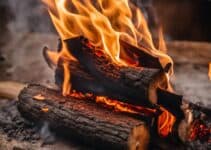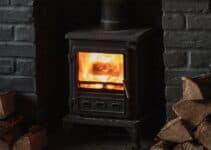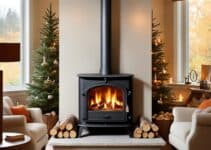If you are considering installing a log burner in your home, there will be a number of factors that may affect your decision.
Some of those may be: will a log burner suits the aesthetics of my home? Will I cope with the lighting, refuelling and cleaning needed to maintain a log burner? Is it actually going to be an economic option for my home?
And after you’ve purchased your burner or stove, the majority of the money you’ll spend will be on logs. So it’s understandable that you’ll want to find out how much wood you’ll need to heat your home.
But the amount of wood a log burner uses is dependent on a number of factors. We’re going to list many of the factors that affect how much wood your log burner consumes because all of the questions about burning capacity are dependent on them.
Factors that Can Affect How Many Logs Your Burner May Use:
- Length of time your burner is in use
- How much air you are allowing into the firebox through the vents or damper
- The capacity of your log burner, such as 4K, 5K, 7K etc.
- Type of wood you intend to burn
- Size of the logs
- Moisture content of the wood
- How often you use the burner
- The high or low heat value of your timber (HHV or LHV)
- How proficiently the stove was installed
- How well the stove and flue/chimney is maintained
- How well the working mechanisms are functioning
- The age of your burner
- Climate or atmospheric conditions
Bearing those factors in mind let’s consider how much timber you may need to source for your log burner.
How Much Wood Does a Wood Burner Use in a Day?
This is not an easy question to answer. It seems obvious to say it, but in most homes, very few stoves will be lit for the entire 24 hours in a day.
And so the answer to this question is dependent on many of the factors mentioned above.
As a rough calculation, though, if you were to keep the log burner running for your waking hours, you’d need at least 10 well-seasoned hardwood logs and possibly more.
In many homes, log burners are largely used during the evenings and at weekends. And many people only use their wood stoves from the late Autumn to Spring, roughly October to April.
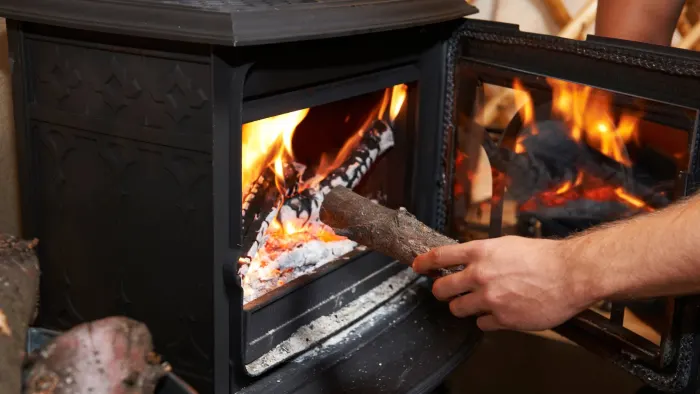
So, if this is the case for you, you’ll need roughly 3-4 tonnes of logs for the winter. This calculation is based on a 5K capacity burner which is the average size in the UK.
Having said that, if you are retired, work from home, have a bigger capacity burner or run your home heating from your wood stove, you’ll need considerably more fuel than this.
Many people without ready access to their own timber get their logs from a firewood merchant. And they can be purchased in loose-fill tonne bags as the cheapest option.
How Long Will a Tonne Bag of Logs Last?
If you expect to use your log burner regularly during the cooler months, you’ll want to purchase your logs in bulk as the most economical option.
The cheapest way to buy logs in bulk is buying by the cord. If your timber supplier offers this option, you can expect to receive a stack of wood that’s 2 and a half meters long, 1.2 meters high and 1.2 meters wide – although some merchant’s cord dimensions vary.
This amount should last you quite a few months.
But these days, most timber merchants sell their timber in tonne bags. You may be more familiar with tonne bags as ‘builder’s bags’.
They are often used by timber merchants as a handy way to deliver firewood and it has become the more usual way to buy bulk wood.
It might be worth noting, though, that tonne bags are usually loose filled with logs so may not actually weigh a full tonne. It’s best to check with your supplier before you order.
If you’ve never owned a log burning stove before you might be wondering how long a tonne bag of logs will last. And as we’ve mentioned before it will depend on so many factors.
However, as a rough estimate, and depending on how well the logs are packed, you may get about 550 logs per tonne bag.
This means if you light your burner only during the evenings, using roughly 5 logs a night and a bit more at weekends, a tonne bag should last you up to three months.
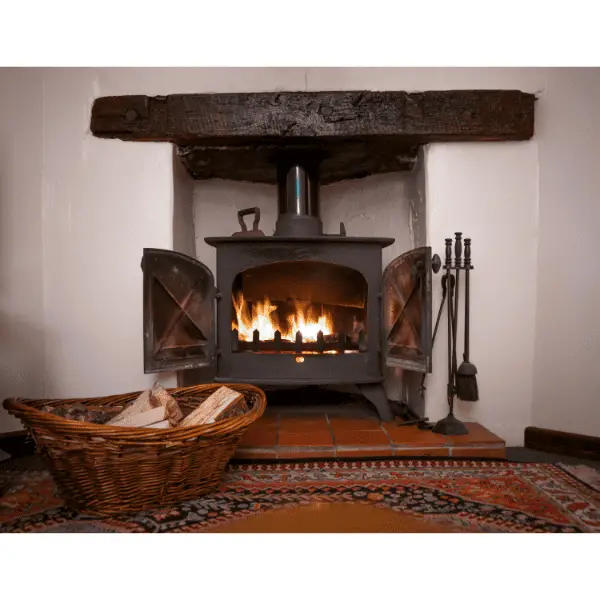
How Much Wood Does a 5kw Stove Use?
In an efficiently burning 5kW stove, around 1.25 to 1.5 kg of wood is consumed per hour. Therefore, for a five-hour heating period, approximately 6.25 to 7.5 kg of wood would be required.
To ensure optimal heat output, well-seasoned wood with a moisture content below 20% should be used. Seasoned wood not only burns cleaner but also minimizes the risk of creosote buildup in the chimney.
The room’s size and insulation also impact the stove’s wood consumption.
Properly insulated spaces retain heat better, resulting in less wood being needed to maintain the desired temperature.
The above is a good rule of thumb and gives you a good idea but there are factors that influence how long your 5kw log burner can burn wood for.
What Log Burns Longest?
If you are buying your firewood from a DEFRA-approved merchant then your logs will be well-seasoned and ready to burn. This means their moisture content will be between 20% and 10% – the optimum is just less than 20%.
It’s worth knowing, though, that the type of wood you buy will hugely affect the burn rate of your logs. And it’s especially useful to know what type of wood burns longest if you have been permitted access to gather timber from private woods or you’re using timber from your own property.
The Wood Burning Characteristics of Different Wood
Hardwoods are considered the best for the longest burning periods. This is because they are slower-growing and denser. They also generate more heat and a better flame.
Having said that, not all hardwoods burn at the same rate or as efficiently as others so let’s look at hardwood burning characteristics:
Oak
Oak is considered one of the best firewood timber types for its slow burning rate. They do need to be seasoned well before burning.
Elm
Elm is a great hardwood for its rate of burn. It will smoulder for a long time. It is, however, difficult to get hold of in the UK.
Ash
Ash is another one of the best types of firewood to source as it has a low moisture content even when green. It provides a good level of heat and flame and is slow burning.
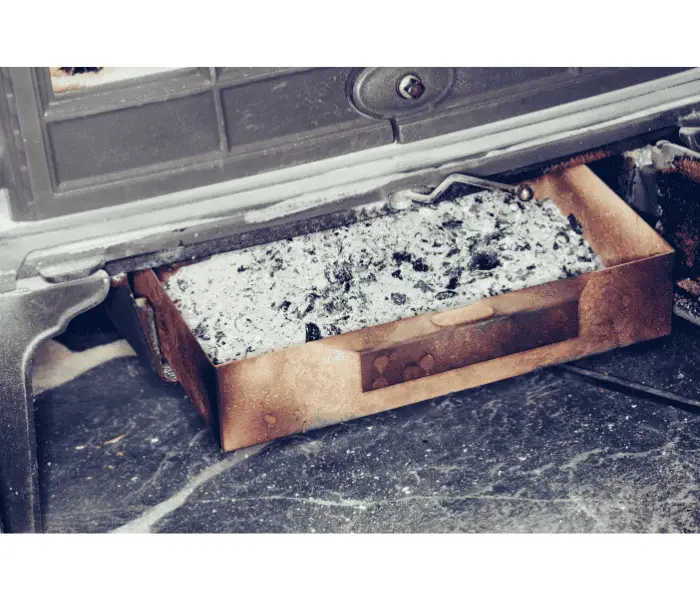
Sycamore
Is another hardwood that burns well but it doesn’t produce the same amount of heat output as other hardwoods.
Hazel
Another favoured hardwood timber for log burners is hazel. It does burn more quickly than ash or oak though.
Holly
Holly is a lovely type of hardwood to burn, although less common when sourcing wood from timber merchants.
Birch
Birch is a hardwood but burns quickly. It’s best used with Oak and Elm to help them sustain a flame.
Apple, Pear, Cherry
Fruit trees are a lovely hardwood type if you can get hold of it. They are slow burning, don’t spit and produce a delightful smell. They do need to be well seasoned before burning.
Do Bigger Logs Burn Longer?
This is a simple question to answer. And while there are still some variables depending on the type of wood being burnt, bigger logs burn slower than smaller logs.
It’s a simple matter of physics. Smaller-sized logs have a greater surface area relative to their volume and this means they usually burn much more quickly.
Another factor is that smaller logs have less matter to burn than larger logs.
Having said this, it’s best not to start with a large log when kindling your burner. You’ll want to get your log burner up to temperature by creating a good flame.
It’s best to start with kindling (small offcuts) and smaller logs when lighting your burner. Once it’s thoroughly warmed, you can put larger logs into the firebox and adjust your damper or vents accordingly.
How Long Should a Log Last in a Wood Burner?
You’ll hardly ever burn just one log unless your burner is the smaller camping variety or it’s coming to the end of the evening and you want to dampen the fire for the night.
And just as before, the answer to this question is based on the size, the type of wood your log and how much air is flowing into your firebox.
But for a well-seasoned hardwood, you can expect to burn roughly one log an hour. But without more logs added to the firebox, it is likely to reach the smouldering stage in about 40-45 minutes.
We think it’s always good to know as much as you can about log burners before you install one. They aren’t for every home or every type of lifestyle.
But if the thought of warming your feet in front of a cosy stove on a cold winter’s night sounds good, they make a versatile as well as beautiful addition to your home.
But as Baden-Powell said to his Boy Scouts over a hundred years ago, ‘Be prepared’. So, make sure you use the right type of wood for your burner, and always check the moisture content of your logs.
This way, you’ll get the most out of your fuel and protect your log burner for potentially a lifetime’s worth of service.
Log Burner – How Many Logs
We can break the question of “how many logs?” down into 2 variables:
· How many logs will the average stove burn in an hour?
· How many logs should you have in your log burner at any one time?
We’ll start with the first question, as this can help us to answer the second.
On average, a log burner will get through 2-3 logs an hour. As mentioned above, this depends on the size of the logs and the type of wood. But when we consider slower- and faster-burning logs of average size, it equals out at about 2-3 an hour.
This doesn’t mean those 3 logs will be fully burnt in an hour, though. Instead, it means that after an hour or so, you’ll want to put some more logs on the fire. You can make your logs last longer by reducing the airflow slightly or by using larger logs.
To sustain a warming flame in your log burner, you’ll want to add more wood before the previous logs reach smouldering stage. As mentioned, this usually happens in about 45 minutes, hence the 2-3 logs an hour.
Based on this, how many logs should you have in your log burner at any one time?
While this depends on the size of the logs and your stove, 1 or 2 should be fine. Larger burners can obviously fit more, but you don’t want to overfill it. Doing so reduces airflow and can impact burning time, and the amount of smoke produced.
You should be able to loosely stack your logs inside the burner, and there should be visible space around them. Space equals airflow, which equals combustion. It’s better to refill your log burner more frequently than stuff it and have a smoky fire.
When to Add More Wood to a Log Burner
When using a log burner, the correct time to add more wood isn’t when the fire has completely burnt out, but rather when it is reduced to a bed of glowing, hot embers. These embers help ignite the new logs quickly and efficiently. So when you see the flowing red embers, throw more wood on!
However, you also need to ensure the fire isn’t burning too vigorously, as adding wood at this stage can smother the fire or lead to excessive heat. Therefore, the ideal time is when the flames have died down, leaving hot embers.
Remember, before adding fresh wood, open the air controls to get the fire burning more rapidly to aid in the ignition of the new logs.
Always add 2-3 logs at a time rather than a single one, as this ensures better burning. Lastly, ensure that the logs you are adding are adequately seasoned and dry to promote efficient burning and reduce harmful emissions.
Final Thoughts
Hopefully, you should now have all the information you need about how much wood to use on your log burner. While there are numerous variables, there’s some basic information that can help you figure it out.
